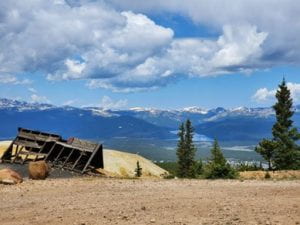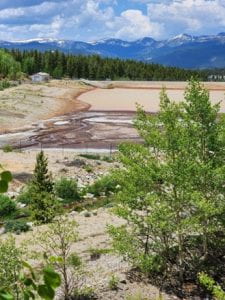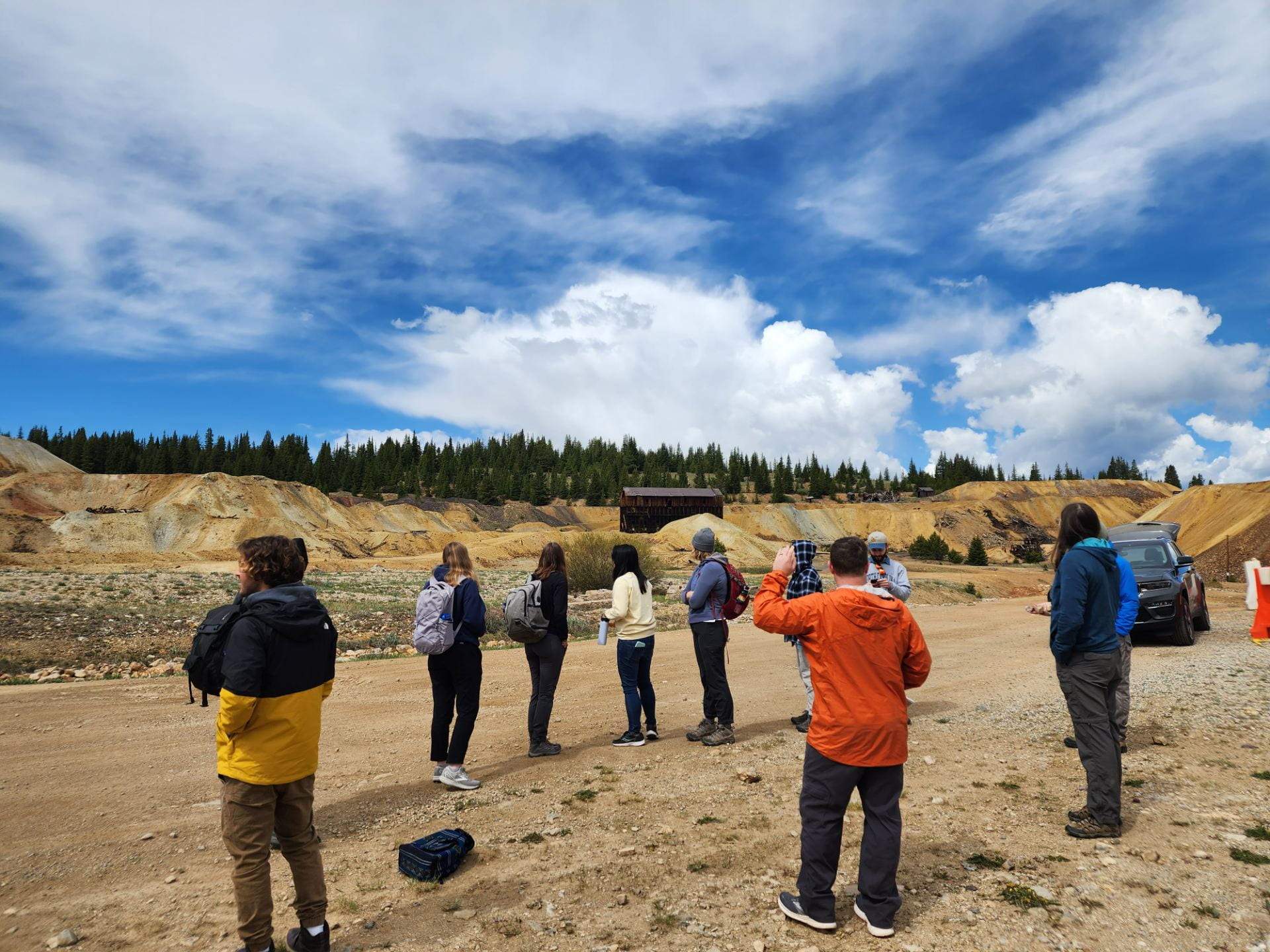We started the day with a drive to Leadville, a mountain town that grew prosperous from silver mining in the late nineteenth century. We would spend the day discussing the process of mining and its environmental impacts. Our first stop was an abandoned mine just outside of Leadville where Tim Diedesch introduced us to the history of the area and briefly explained some of the mining process. We then drove just a few minutes down the road to a stop with some more old mining equipment where we could overlook the surrounding landscape.

At this stop, Tim taught us about how certain minerals that are mined in Colorado form. He explained how metals are formed in an area around a pluton (body of magma) called the skarn. As you move away from the pluton, and therefore decrease temperature different metals are found in the skarn. This led us to the conclusion that the pluton was likely close to the Climax mine, where copper and gold had been found. As distance increased away from the pluton toward Leadville, silver is found. We also discussed how mines in the Leadville area targeted a specific type of ore deposit called a Manto. Manto’s are mineral bodies deposited after the skarn that are caused by an introduction of oxygen into the system. As a result, mining from these bodies is often more economically viable than mining from the skarn, because the minerals have already been turned into oxides making them easier to smelt. Additionally, Manto’s are usually not as deep as the skarn is.

After learning about the geochemistry behind Colorado mining, we shifted our focus to the impacts of mining on the environment. During lunch, we calculated the total amount of sediment removed from Leadville mines and found that there was so much material removed that it would cover all of Rice University’s campus in at least 6 feet of sediment. A small hail storm cut our lunch short so we hopped back in the cars and headed to our third stop of the day. This stop was a water treatment plant and retention pond in California Gulch but on the drive away from the old mines we spotted another retention pond with extremely dark brown water.

This water has a very low pH, which causes it to strip toxic metals from the surrounding rocks and dissolve them into groundwater. This sparked a discussion about how dramatically mining can contaminate groundwater, which was further shown at the water treatment plant. We talked about how even though 90% of the surrounding mines had been reclaimed and shut down for many decades, the water was still contaminated. California Gulch is particularly contaminated as a result of the Yak tunnel. This was a tunnel that collected water from most of the surrounding mines and drained it into the gulch. The California Gulch has since been declared a Superfund Site, which is an area with hazardous materials that the EPA is working on cleaning up.

There was a big shift in tone as we moved onto our fourth stop, the National Mining Hall of Fame and Museum in Leadville. It is important to note that this museum is largely funded by mining companies. We did learn a lot about the history of the area at the museum, but it was interesting to discuss how the exhibits might be minimizing the environmental degradation caused by mining. However, I think we all agreed that the best part of the museum was the walk-through model of a coal mine. It wasn’t particularly informative, but we were surprised by how detailed and elaborate it was.

A large portion of the mining museum focused on the mining of molybdenum at the nearby Climax mine. The exhibits acknowledged that this mine had had poor impacts on the environment, but also tried to emphasize that the mine is currently much more mindful of how it affects the environment. We decided to take a different route back to the inn so we could drive past Climax Mine. We were shocked by the sheer size of the mine and how much of the surrounding landscape it had taken over. It really made us think about the perspective of the mining museum and compare the exhibits on the mine to what we actually saw.
When we got back to the inn, Dean and Audrey cooked us a delicious dinner and a few of us ended the night with a sunset walk along the railroad tracks and some stargazing.
Written by Emerson Long
